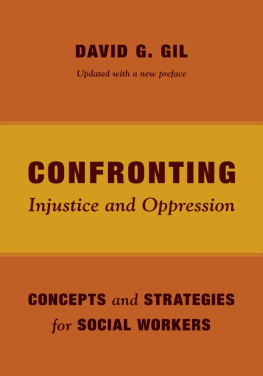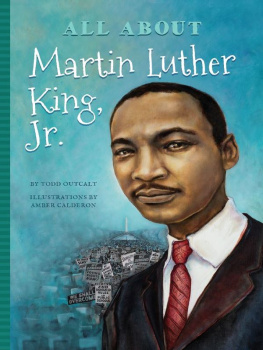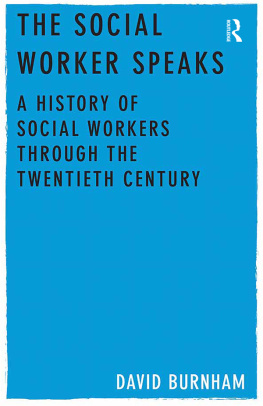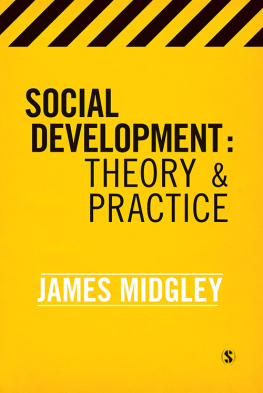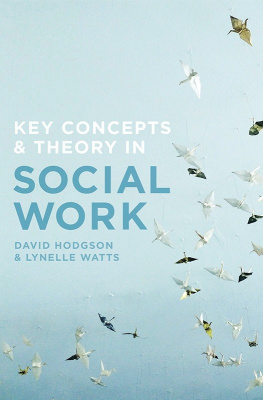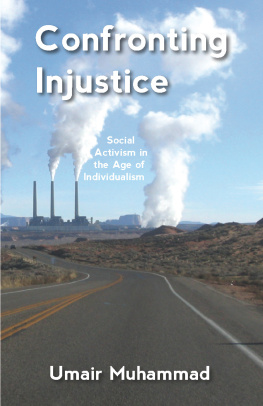Confronting Injustice and Oppression
Foundations of Social Work Knowledge
FOUNDATIONS OF SOCIAL WORK KNOWLEDGE
Frederic G. Reamer, Series Editor
Social work has a unique history, purpose, perspective, and method. The primary purpose of this series is to articulate these distinct qualities and to define and explore the ideas, concepts, and skills that together constitute social works intellectual foundations and boundaries and its emerging issues and concerns.
To accomplish this goal, the series will publish a cohesive collection of books that address both the core knowledge of the profession and its newly emerging topics. The core is defined by the evolving consensus, as primarily reflected in the Council of Social Work Educations Curriculum Policy Statement, concerning what courses accredited social work education programs must include in their curricula. The series will be characterized by an emphasis on the widely embraced ecological perspective; attention to issues concerning direct and indirect practice; and emphasis on cultural diversity and multiculturalism, social justice, oppression, populations at risk, and social work values and ethics. The series will have a dual focus on practice traditions and emerging issues and concepts.
The complete series list follows the index.
Confronting Injustice and Oppression
Concepts and Strategies for Social Workers
Updated with a New Preface
David G. Gil

Columbia University Press
New York
Columbia University Press
Publishers Since 1893
New York Chichester, West Sussex
cup.columbia.edu
Copyright 2013 Columbia University Press
All rights reserved
E-ISBN: 978-0-231-53533-5
Library of Congress Cataloging-in-Publication Data
Gil, David G.
Confronting injustice and oppression : concepts and strategies for social workers / David G. Gil Updated with a new preface.
pages cm. (Foundations of social work knowledge)
Includes bibliographical references and index.
ISBN 978-0-231-16398-9 (cloth : alk. paper)ISBN 978-0-231-16399-6 (pbk. : alk. paper)ISBN 978-0-231-53533-5 (e-book)
1. Social justice. 2. Discrimination. 3. Social change. 4. Social service I. Title.
HM671.G54 2013
303.372dc23
2012045866
A Columbia University Press E-book.
CUP would be pleased to hear about your reading experience with this e-book at .
COVER DESIGN: Chang Jae Lee
References to websites (URLs) were accurate at the time of writing. Neither the author nor Columbia University Press is responsible for URLs that may have expired or changed since the manuscript was prepared.
TO EVA, MY PARTNER IN LIFE AND WORK.
TO TEACHERS, STUDENTS, COLLEAGUES, AND FRIENDS
NEAR AND FAR IN TIME AND PLACE,
WHOSE THOUGHTS AND PRACTICE
THIS BOOK REFLECTS;
TO PEOPLE EVERYWHERE
WHO PURSUE COMMUNITY
WHERE ALL ARE EQUAL AND FREE
AND HUMAN POTENTIAL CAN FLOURISH.
IN MEMORY OF
MOHAMED BOUAZIZI
MARCH 29, 1984JANUARY 4, 2011
WHOSE SELF-IMMOLATION IN TUNIS
ON DECEMBER 17, 2010
TO PROTEST DEHUMANIZING OPPRESSION
STARTED THE ARAB SPRING
Contents
I would not have written this book unless Professor Frederic G. Reamer, the editor of the Foundations of Social Work Knowledge Series, had offered me an opportunity to sum up my insights into injustice, oppression, and social change. I am grateful to him for urging me to accept this assignment, for it enabled me to develop and present my thoughts more systematically than I had done in separate publications in the past.
I would also like to thank my editors at Columbia University Press, John Michel, Alexander Thorp, Jennifer Perillo, Stephen Wesley, and Michel Haskell, as well as the reviewers of my manuscript, for their support throughout the writing of this book. Finally, my thanks go to the editorial, design, desk-topping, and marketing staffs of Columbia University Press; to Auralie Logan, who made the original index; and Robert Swanson, who prepared the index of the revised edition.
Preparing a second edition of Confronting Injustice and Oppression nearly fifteen years after its original publication offers an opportunity to review its assumptions, perspectives, and conclusions and to note some relevant, unexpected developments during the intervening years.
The book suggested that exploitation and social injustice were established coercively, some ten thousand years ago, following the spread of agriculture. Since then, exploitation and injustice have evolved into nearly universal existential realities, maintained by political, ideological, and physical oppression and by validation in the consciousness of their agents and beneficiaries, as well as of their victims.
The book also suggested that transcending the realities of exploitation, injustice, and oppression and transforming them into just and cooperative ways of life would require extended efforts by nonviolent liberation movements aiming to facilitate revisions of consciousness conducive to a social justice culture. For governments, unless challenged by social movements, tend to sustain established social, economic, political, and ideological realities, regardless of their unjust consequences. Recent social movements for the liberation of women and for civil rights for various minorities illustrate the validity of this hypothesis.
I continue to consider valid the books analysis of social injustice and oppression and of strategies for constructive social change, as well as the assumptions noted in the introduction.
The book did not discern in mainstream U.S. politics social movements pursuing social justice and human liberation, for such movements tend to function only on the left margin of its political spectrum. One can identify, however, persistent efforts to suppress social justice activism, including labeling it un-American. Moreover, though the United States is a predominantly Christian culture, the social justice philosophy and practice of Christ and his disciples and early followers, as described in the Gospelsthey held all things in common (Acts 2:4445)are usually not advocated by contemporary U.S. churches.
Until December 17, 2010, social injustice, oppression, and corruption by dominant social classes and governments were widespread in North Africa and the Middle East, yet social movements that might challenge these conditions were not active over recent decades and did not coordinate their efforts. This changed dramatically on that December day, when Mohamed Bouazizi, a street vendor in Tunis, set himself on fire to protest the confiscation of his merchandise by local officials. His self-immolation incited mass demonstrations throughout Tunisia. Following his death on January 4, 2011, the protests intensified and eventually forced President Zine El Abidine Ben Ali to resign on January 14, 2011, after twenty-three years in power, and to flee to Saudi Arabia. The overthrow of the president was followed by a democratic election of a constituent assembly and a new president. News of the Tunisian uprising spread quickly, with help from contemporary social media and networkscell phones, Facebook, LinkedIn, Twitter, YouTubeand inspired popular protests against autocratic governments throughout North Africa and the Middle East. Thus began the Arab Spring.
Less than two years after these revolutionary events in Tunisia, governments in Egypt, Libya, and Yemen were overthrown and replaced. The president of Egypt, Hosni Mubarak, was tried and imprisoned for life; the Libyan leader, Muammar Gaddafi, was killed; and the president of Yemen, Ali Abdullah Saleh, resigned and was replaced in an election. Opposition forces in Libya were supported by UN-authorized interventions against military assaults on urban population centers. Uprisings also began in Bahrain and Syria. Massive protests occurred in Algeria, Iraq, Jordan, Kuwait, Morocco, and Oman, while minor protests occurred in Lebanon, Mauritania, Saudi Arabia, Sudan, and Western Sahara. Governments in several countries tried to suppress protests violently, and in other countries, governments granted limited concessions.

